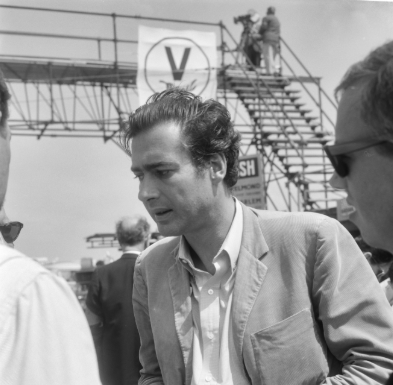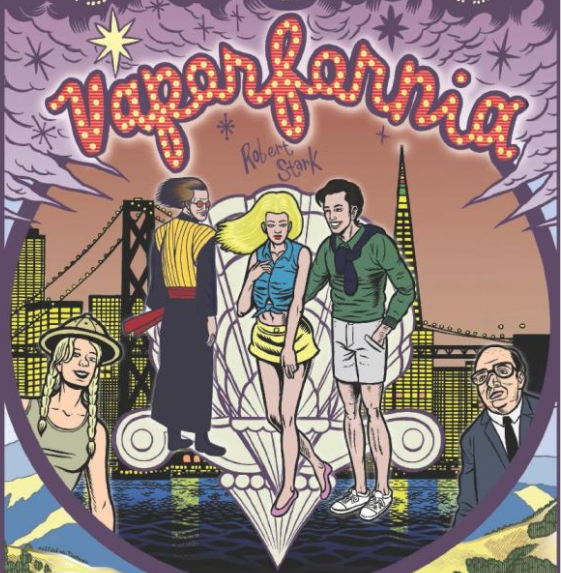JFK, RFK, John Frankenheimer, and the Mystery of Sirhan Sirhan
 |
| John Frankenheimer |
[Originally published April 14, 2018]
Sirhan Sirhan, the man who has been characterized as
both the first “Palestinian terrorist” as well as the quintessential
“Manchurian Candidate”, was described after his alleged assassination of Robert
F. Kennedy in 1968 as having been “motivated by Kennedy’s support for Israel.”
Sirhan is supposed to have written in a notebook, “Kennedy must die by June 5th”
(i.e., the anniversary of the outbreak of the Six-Day War in 1967) [1]. Sirhan
retracted his initial admission of guilt in the crime, claiming to have been
“hypno-programmed” by the assassination’s plotters. Indeed, more than one
researcher has suggested that Los Angeles sex therapist and hypnosis expert
William J. Bryan did the programming. “Bryan, a self-proclaimed eccentric
character, once boasted to two of his favorite prostitutes that he, in fact,
had hypnotized Sirhan and had worked on ‘top secret’ CIA projects,”
writes Forgotten Terrorist author Mel Ayton. “Bryan’s most
famous hypnotic subject was the notorious Boston Strangler, Albert DeSalvo,
whose name appeared in Sirhan’s notebooks.” [2]
Bryan served as a technical advisor on John
Frankenheimer’s film The Manchurian Candidate (1962) [3],
which is about a brainwashed assassin. Frankenheimer had been a successful
television director in 1960 when he declined an offer to work for the John F.
Kennedy presidential campaign. (According to Frankenheimer, United Artists
executive Arthur Krim had aspirations to become the U.S. Ambassador to Israel,
and was reluctant to green-light The Manchurian Candidate for
fear it would upset Kennedy; Krim is supposed to have relented, however, after
learning that JFK was a fan of Condon’s novel [4].) Frankenheimer, who said he
“felt guilty” after the Kennedy assassination for not having done the work for
his campaign, proceeded to insinuate himself with the Robert F. Kennedy camp:
“when his [i.e., JFK’s] brother declared his candidacy in ’68, I immediately
called Pierre Salinger and said, ‘Pierre, I want to be part of this.’” “I never
left him,” Frankenheimer recalled. “I was there with him for 102 days.” [5]
“Bobby became best friends with me,” the director
claimed. “He was staying with me in Malibu, and I drove him to the Ambassador
Hotel where he was shot.” [6] Frankenheimer further related a strange
circumstance of this “defining moment” of his life to interviewer Alex Simon.
“You were supposed to be up on the dais with him at the Ambassador, weren’t
you?” Simon asked. “Yes, then at the last moment, it was decided that having a
film director up on stage with him wasn’t the image they wanted, so we had
[Kennedy’s labor advisor,] a friend named Paul Schrade, who was about my size
and complexion, take my place,” Frankenheimer recounted. “And he was one of the
three people shot in the kitchen.” [7] Schrade, who survived, has
maintained ever since that day that Sirhan only served to create a distraction
and that the shots that killed RFK were fired from behind the candidate’s back
[8].
Ed Sanders, in his biography of Sharon Tate, relates
that Sirhan was reported by the Immigration and Naturalization Service to have
been “attending parties on behalf of the Satanist English cult [the Process
Church], including one at Sharon Tate’s place.” Sanders points to a possible
motivation for the Tate murder that had absolutely nothing to do with some
Mansonian (or Bugliosian) notion of an apocalyptic “Helter Skelter” war:
INS criminal investigator
Richard Smith’s report stated that an LA law enforcement agency had a female
informant who averred that the English Satanist group had commissioned Manson
to kill Sharon Tate. […] The reason for the contract […] was “something that
she unfortunately overheard that she was not supposed to overhear either in
regards to Sirhan Sirhan or about Sirhan Sirhan.” [9]
Tate’s acting coach at the time was an Israeli, Zev
Lahav, who went by the name “Laurence Merrick” and had been sent to the U.S. to
promote Zionist interests [10]. Lahav, with partner Robert Hendrickson,
produced a documentary, Manson (1973), about the Family, which
included interviews conducted both before and after the Tate-LaBianca murders.
Members of the Manson Family had come to visit the set of Lahav’s previous
film, Black Angels, in 1969 – an eerie circumstance considering the
race war plotline’s resemblance to the “Helter Skelter” scenario later
attributed to Manson by Los Angeles County Deputy District Attorney Vincent
Bugliosi, who participated in the making of Lahav’s Manson documentary.
Another of Lahav’s films of 1969, interesting in view of his Tate-Manson
connections, is Guess What Happened to Count Dracula?, which is
concerned with occult ritualism and mind control (and even features a minor
character named Sharon) and was filmed at the Magic Castle, which, as Scott
Michaels points out in the documentary Six Degrees of Helter Skelter (2009),
sits a few dozen yards from the Franklin Garden Apartments where Charles Manson
shot Bernard Crowe over a bad drug deal – also very near the Franklin Avenue
apartments from which Manson ran a prostitution ring called 3-Star Enterprises.
Frankenheimer, over the course of his career, would
direct a number of movies with explicitly Jewish and anti-Nazi themes: The
Train (1964), The Fixer (1968), Black Sunday (1977), The
Holcroft Covenant (1985), and Dead Bang (1989). Black
Sunday, in particular, depicts the Israelis as allies against Islamic
terrorism. Indeed, the assassination of RFK, as Ayton puts it, “might be the
first act of the tragedy that culminated in 9/11” [11].
Rainer Chlodwig von K.
Rainer is the author of Drugs, Jungles, and Jingoism.
Endnotes
[1] Troy, Gil. “Understanding RFK’s Assassination as
Palestinian Terror”. The Jerusalem Post (June 5, 2013): https://archive.ph/GBxSD
[2] Ayton, Mel. The Forgotten Terrorist:
Sirhan Sirhan and the Assassination of Robert F. Kennedy. Washington, DC:
Potomac Books, pp. 6-7.
[3] Vaughn, Robert. A Fortunate Life. New
York, NY: Thomas Dunne Books, 2008, pp. 260-261.
[4] “Dialogue on Film: John Frankenheimer”, in
Armstrong, Stephen B., Ed. John Frankenheimer: Interviews, Essays, and
Profiles. Lanham, MD: The Scarecrow Press, 2013, p. 96.
[5] Simon, Alex. “John Frankenheimer: Renaissance
Auteur”, in Armstrong, Stephen B., Ed. John Frankenheimer: Interviews,
Essays, and Profiles. Lanham, MD: The Scarecrow Press, 2013, pp. 149-151.
[6] Hart, Hugh. “Frankenheimer Knew Period’s Main
Players”, in Armstrong, Stephen B., Ed. John Frankenheimer: Interviews,
Essays, and Profiles. Lanham, MD: The Scarecrow Press, 2013, p. 213.
[7] Simon, Alex. “John Frankenheimer: Renaissance
Auteur”, in Armstrong, Stephen B., Ed. John Frankenheimer: Interviews,
Essays, and Profiles. Lanham, MD: The Scarecrow Press, 2013, p. 151.
[8] Post, Paul. “Schrade Still Seeks Justice for RFK:
Senator Was Assassinated 47 Years Ago, June 5, 1968”. Saratogian (June
5, 2015): https://web.archive.org/web/20160213061912/http://www.saratogian.com/article/ST/20150605/NEWS/150609842
[9] Sanders, Ed. Sharon Tate: A Life.
Boston, MA: Da Capo Press, 2015, p. 266.
[10] K., Rainer Chlodwig von. “Israel, Manson, and
Vampirism: The Freaky Life of Laurence Merrick”. Ideological Content
Analysis (May 4, 2017): https://icareviews.wordpress.com/2017/05/04/israel-manson-and-vampirism-the-freaky-life-of-laurence-merrick/
[11] Ayton, Mel. The Forgotten Terrorist:
Sirhan Sirhan and the Assassination of Robert F. Kennedy. Washington, DC:
Potomac Books, p. 11.



The Holcroft Covenant I only saw this year. I must say it was a LOLfest from start to end. Nazis-in-the-breakfast-cereal level paranoia.
ReplyDeleteI'll check it out eventually. If it's funny, that might make it worthwhile.
Delete